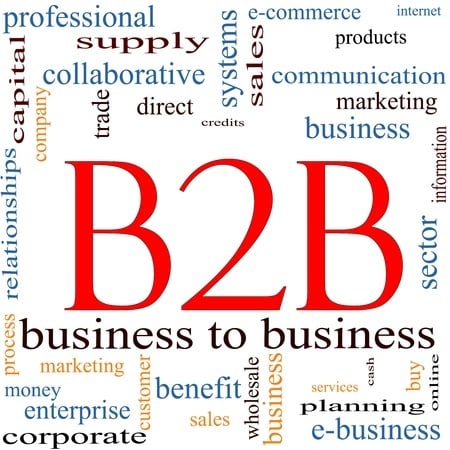If there’s one term that is almost synonymous with customer service today, it’s ‘ticketing’. Such has been the pervasiveness of ticketing software.
From restaurants to retail businesses to tech companies to hospitality brands, most companies use ticketing to handle customer support.
But, here’s the real question: is it something that’s easy to get used to and work with on a daily basis? I wouldn’t say so!
Does it help you deliver quick, efficient customer service? Not really!
If you think investing in a ticketing software could mean happier customers, more productive team members, and higher bottomline, you’d be mistaken.
Yes, ticketing is popular and has been around for decades. But times are changing. Modern-day customer needs and expectations require companies to look beyond such systems to drive engagement and loyalty.
Before we get into all that, let’s dive into the history of ticketing.
Where it all began
The concept of ticketing was born in 1988 for a very specific reason: to allow technical support teams to streamline incoming queries and requests — ones related to software, electronics, and so on.
With ticketing software, companies had a single point of contact, making it easier for customers to reach out and ask for help.
In this system, the ‘ticket’ itself referred to a unique number that allowed businesses to track customer issues and route it to the right person within the team. Think about it this way: it’s the digital equivalent of asking a person to take a number while waiting in line at a deli counter.
It was around the same time that the internet was born, and along with it came email support. Also, help desks soon started facilitating phone support — the line of thinking here was that a live person could handle tickets more efficiently in real-time. But, phone support had its own downside, long waiting times and complicated workflows, to name a few.
Ticketing was supposed to solve many of these issues by streamlining customer queries across multiple channels and ensuring everything is tracked and categorized properly. It was designed to help teams adapt to the evolving customer behaviour, provide quick and efficient answers to problems, and give companies valuable insights into areas of improvement.
But, in reality, the system wasn’t very efficient. Here’s why!
Understanding how Ticketing works
With ticketing software becoming omni-present, the focus has shifted from customer emotions to closing as many customer queries as possible.
Are you able to get done with X number of tickets in a day? Great! Has your support team closed 20% more tickets this month compared to the previous? That calls for a celebration!
Consider this workflow:
1. A customer sends an email highlighting their issue. A ticket number is automatically generated for this.
2. The customer receives an automated message stating that their email has been received and that they’ll hear back soon
3. The customer support staff responds to the email, mostly to gather more context about the problem from the customer.
4. The customer responds with the information that is being requested — in line with the format required by the system (for instance: “reply above this line”)
5. Steps 2 and 3 might be repeated till the support staff can find a fix for the solution. Delays are bound to occur during each of these steps because of the amount of time that it takes people to gather the necessary information and for tickets to work their way through the system queue.
6. Now, keep in mind that if the support staff has to escalate the issue and loop in someone from the Engineering or Product team, that will only cause further delays. The support staff will have to forward the query to them, give them complete context on the problem, and ensure that they have the means to take the conversation forward with the customer.
7. When someone from another team is looped in, there could be more back and forth with the customer resulting in longer delays. The ticket is updated all along.
8. And finally, once the problem is solved, the support staff closes the ticket — which is the end goal.
9. At this point, the customer receives a request to submit feedback on the service experience.
Sounds cumbersome, doesn’t it?!
I’d even go as far as saying that ticketing not only impedes your team’s efficiency but makes it harder for your company to deliver great customer experiences.
How ticketing systems get in the way of great CX
1. The software is convoluted: Most ticketing systems have made life complicated. For starters, customer support teams are now having to switch between multiple tabs and screens to gather information, and are having to deal with complicated workflows. Because these systems aren’t user-friendly, training becomes arduous. And ultimately, there’s a higher chance for support reps to make mistakes – replying to the same email twice, leaving an important query unattended, and so on.
2. The systems are inhuman: One of the biggest drawbacks with using a ticketing system is that it takes the emotion out of the equation. You look at every customer problem as a mere ticket. And for the customer, they feel like they’re interacting with bots. In such a scenario, you lose opportunities to build strong, genuine relationships with customers.
3. The philosophy is outdated: The whole approach of turning customers into unique IDs that can then be routed through a waiting line is reminiscent of the heydays of manufacturing. Ticketing made sense in the 1980s and 1990s when companies wanted to streamline queries and find an easy way to keep track of them. In the present day and age, however, technology is advancing at a rapid pace. When you have the capabilities to anticipate customer needs, create proactive experiences, and build an emotional connection, why invest in a ticketing solution that doesn’t help with any of these?!
4. Company-wide collaboration becomes tough: Ticketing systems stifle company-wide collaboration and information sharing. When you use a ticketing system, the customer support function is siloed from the rest of the organization — as other teams typically don’t have access to the platform. Non-customer facing teams (developers, technicians, implementation experts, and others) are kept in the dark about evolving customer painpoints and expectations. And because they’re walled off from everyday customer communications, they also lose the opportunity to learn from customer feedback.
If not ticketing, what’s the alternative?
Thanks to how much technology has advanced over the years, companies can actually look beyond traditional ticketing systems and rethink the customer service experience.
I’m not suggesting a grand changeover or transformation. In fact, the alternative to ticketing is something we’re all familiar with – conversations!
It’s about NOT turning simple conversations into robot-like communications.
Why is this important?
Firstly, we’re living in the age of personalization. According to one research, close to 70% of customers feel frustrated when their experience is impersonal. And to make it clear, personalization cannot happen when you convert every customer conversation into a random number.
Secondly, customers want immediate answers to their problems. They want to be able to pick up their device from their pockets, and be able to converse with their favourite brands seamlessly, in just a few clicks. They don’t want to receive automated messages or weirdly-formatted emails sent from ticketing systems asking them for more information (especially when the brand already has the necessary data). Minimize friction – that’s the way forward!
So, here’s where taking a conversation-based approach to customer support can make all the difference.
One way to go about this is to handle customer communications right from your work inbox. You’re basically doing away with a clunky ticking system and handling support from a place your team is very comfortable with – email. Moreover, when customer conversations stay on email, your support staff can actually get to know customers and develop strong relationships with them. They can deliver more personalized service because customer issues are seen as they are and not as random ticket IDs.
This might be a slightly different philosophy compared to what you’ve been doing currently. But think about it. There are many solutions out there that can help you transition to this more effective way of doing customer support.



